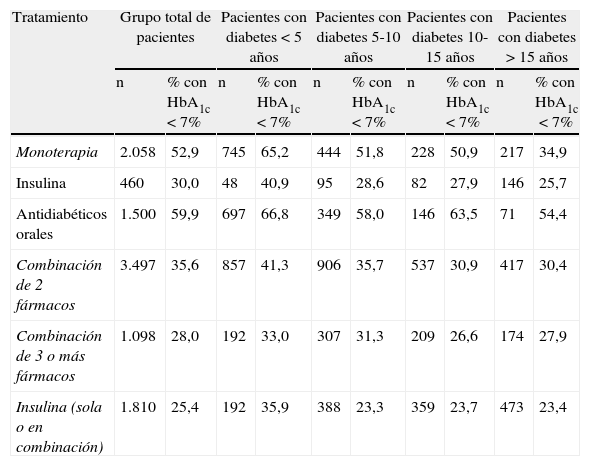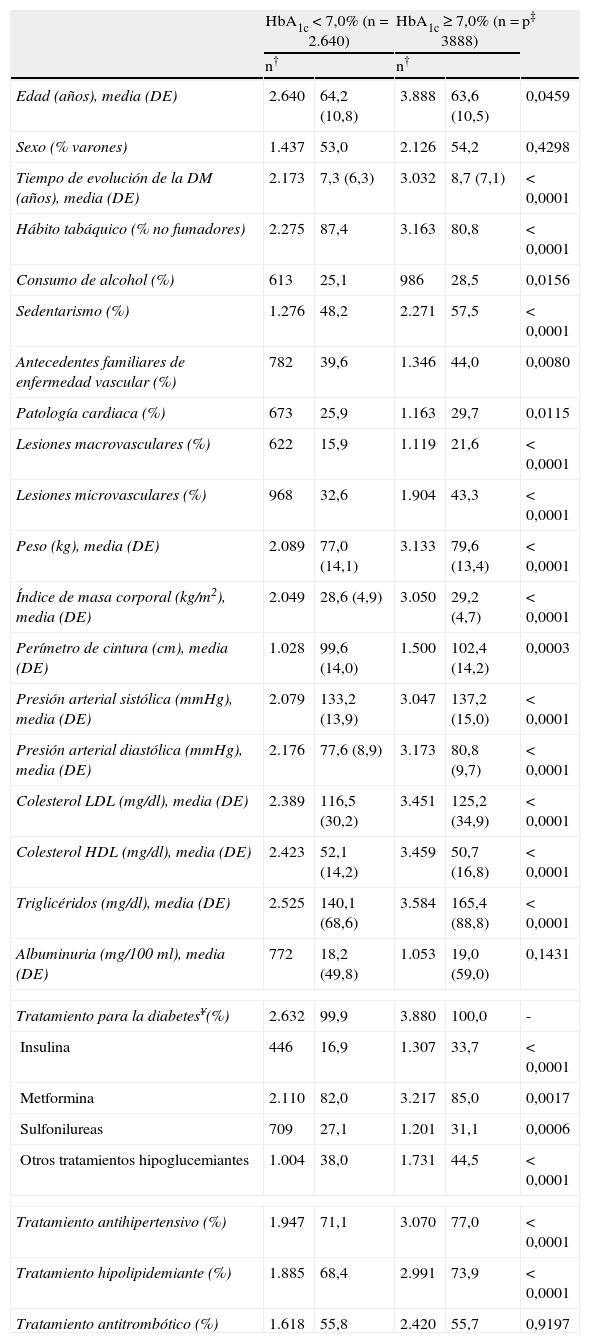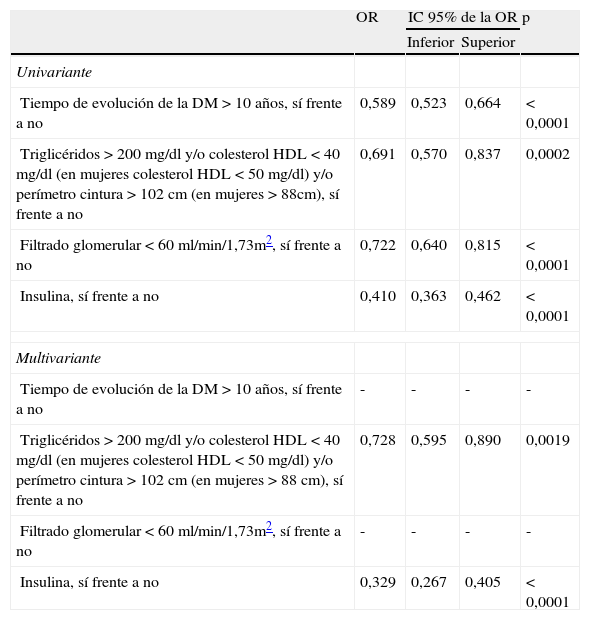Evaluar la relación del grado de control glucémico con las características de la enfermedad y el tratamiento antihiperglucemiante en pacientes con diabetes mellitus tipo 2 en España.
Pacientes y métodoEstudio epidemiológico transversal y multicéntrico en el territorio español con muestreo consecutivo. Se registraron variables demográficas y clínicas de pacientes con seguimiento en el centro >12 meses.
ResultadosSe analizaron datos de 6.801 pacientes reclutados por 734 médicos especialistas y 965 de atención primaria: el 97,8% recibían tratamiento farmacológico (30,3% monoterapia, 51,4% con 2 fármacos, 16,1%≥3 fármacos y 26,6% con insulina). La hemoglobina glucosilada (HbA1c) media (DE) era de 7,3 (1,2) % y el 40,4% de los pacientes tenían HbA1c<7,0%. Esta proporción varió (p<0,0001) según el tiempo de evolución de la diabetes (51,8% con <5 años, 39,6% con 5-10 años, 35,1% con 10-15 años y 31,4% con >15 años) y el tipo de tratamiento (monoterapia 52,9%, biterapia 35,6%, triple terapia 28,0% e insulina 25,2%). En el análisis multivariante, el tratamiento con insulina (odds ratio [OR] 0,329; intervalo de confianza del 95% [IC 95%] 0,267-0,405) y la existencia de componentes del síndrome metabólico (hipertrigliceridemia y/o colesterol unido a lipoproteínas de alta densidad bajo y/u obesidad abdominal) (OR 0,728; IC 95% 0,595-0,890) se asociaron con peor control glucémico.
ConclusionesSe constata el deterioro del control glucémico con la evolución de la enfermedad y la complejidad del proceso y del tratamiento, lo que en parte puede estar relacionado con la inadecuada selección e intensificación del tratamiento.
To evaluate the relationship between the degree of glycemic control and the features of the disease and glucose-lowering treatment in patients with type 2 diabetes mellitus in Spain.
Patients and methodsCross-sectional epidemiological study in Spain with consecutive sampling. We recorded demographic and clinical variables of patients who were followed up in the center for >12 months.
ResultsWe analyzed data from 6,801 patients enrolled by 734 specialist and 965 primary care physicians: 97.8% received pharmacological treatment (30.3% monotherapy, 51,4% dual therapy, 16.1% triple therapy and 26.6% insulin). HbA1c was 7.3 (1.2) % and 40.4% of patients had HbA1c<7.0%. This proportion varied (P<.0001) according to the duration of diabetes (51.8% with <5 years, 39.6% with 5-10 years, 35.1% with 10-15 years and 31 4%>15 years) and the type of treatment (52.9% monotherapy, 35.6% dual therapy, 28.0% triple therapy and 25.2% insulin). In the multivariate analysis, insulin therapy (odds ratio [OR] 0.329; IC95% 0,267-0,405) and the presence of components of metabolic syndrome (hypertriglyceridemia and/or low HDL and/or abdominal obesity (OR 0.728; IC95% 0,595-0,890) were associated with poor glycemic control.
ConclusionsWe observed an impairment of glycemic control with the progression of the disease and the complexity of the process and treatment, which in part may be related to the inadequate treatment selection and intensification.
Artículo
Comprando el artículo el PDF del mismo podrá ser descargado
Precio 19,34 €
Comprar ahora











